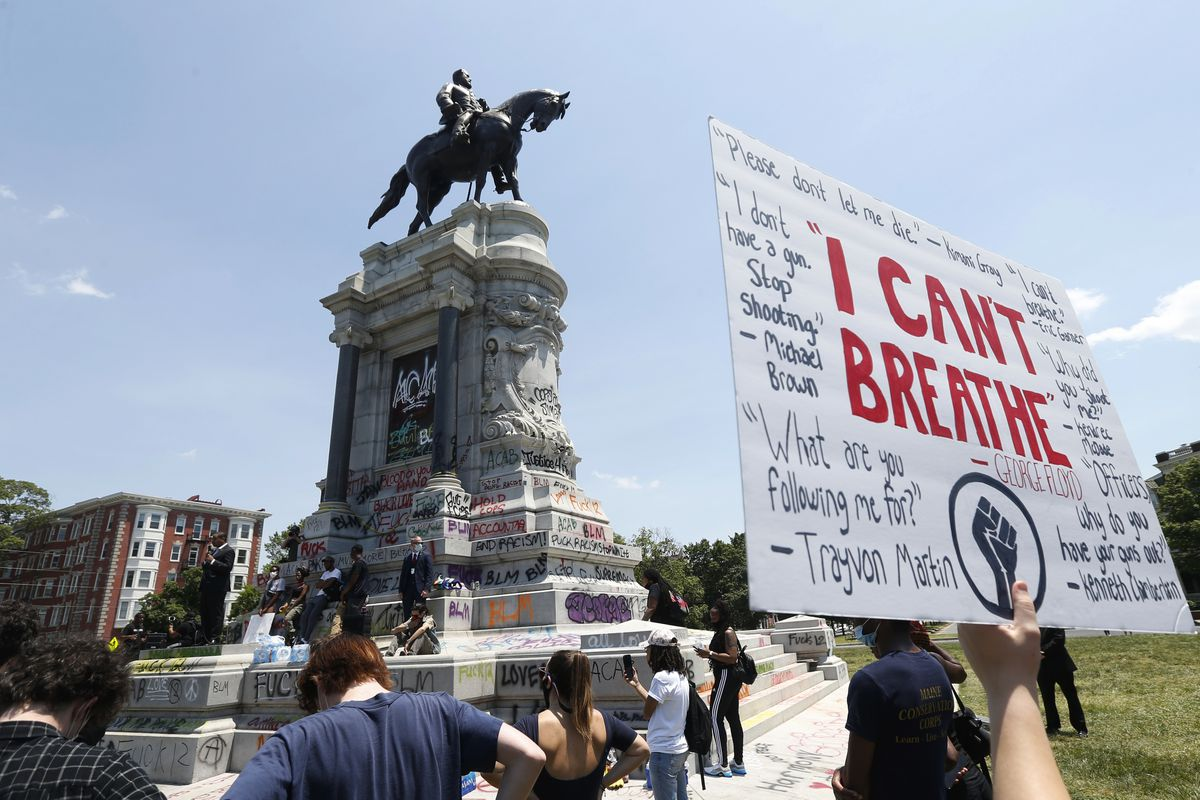In the aftermath of the protests surrounding the abhorrent murder of George Floyd, some Americans have started calling for the destruction of statues of important historical figures. Six statues of confederate general Robert E. Lee have been either willingly removed by local governments or forcibly removed and/or deformed by protestors in the past two weeks. While some towns, such as Fort Myers, Florida have removed the general from their premises, others, like Richmond, Virginia, have judges who are putting injunctions against the removal of statues of Lee because they may be private property. Countless other statues of various Confederate generals, slavery-sympathizers, and racist American historical figures are being defaced and spray-painted. Other statues, such as those of Robert E. Lee, Christopher Columbus, and Theodore Roosevelt, have also been, or are in the process of being, removed.
While these men were once celebrated for their positive contributions to the American Dream and our history, their troubled, problematic, and sometimes racist characteristics are coming under greater scrutiny. This has led many to destroy these statues and demand that other important statues be taken down as well. As someone who grew up around the nation’s capital, I believe that this erasure of history is wrong. The demolition of these statues is both unconstructive and provides a gateway to erasing history rather than criticizing and learning from it.
The demolition of these statues is both unconstructive and provides a gateway to erasing history rather than criticizing and learning from it.
Before I advance my argument, I ought to mention that I am writing this article from a place of privilege. I, a young White woman from an affluent D.C. suburb, have had quality education, not to mention basic food, shelter, and safety, at my fingertips. I am sad to admit that I believed in “all lives matter” until this year when the Floyd, Taylor, and Arbery murders provided me with a wake-up call. I opened my mind and heart to the Black Lives Matter movement, having difficult discussions with my Black peers and reading literature on the Black experience in America as well as how I can be a White ally. It starts with understanding that Black Lives Matter does not mean that other lives do not matter, but that we need to focus on the attack on Black Americans by the police and White America.
I’m not clarifying this in an attempt to virtue signal. I have an enormous amount of learning to do; I am late to the BLM movement, but I support it now. I am simply hoping to articulate that my ideas on the statue removal are open to criticism and reform, and in no way do I condone supporting racist, hateful rhetoric espoused by confederate generals and apologists, let alone any Americans.
With that being said, I oppose the removal of any statue commemorating an American war hero, president, or historical figure. Statues provide the public with the ability to learn about American history for free and typically commemorate the figure’s positive contributions to American society while allowing the public to acknowledge their flaws. Most cities’ educational facilities cost money for visitors, perpetuating the educational gap between socioeconomic classes. Statues in public parks and areas provide a brief synopsis of American leaders’ contributions to our society.
Growth comes from reflection, and that is something we all need to do a little more of.
Instead of tearing down statues of historical figures that have done wrong, updating the plaques and the education about these figures is extremely important Updating plaques underneath these statues promotes critical historical thinking and gives Americans a holistic view of their history. Below Robert E. Lee could lie a paragraph examining the suffering that enslaved Americans experienced under the terrorizing rule of his army alongside any praise of his war tactics. Every statue should have a critical analysis of their life written on the plaque underneath, something that the public can engage with, debate, and learn from.
Teddy Roosevelt can be celebrated for his contributions to the National Park system, trust-busting, and mediating the Russo-Japanese war, while also criticized for his colonialism in Latin America. The information potential from statues of key historical figures is vital. Provided every statue has a description, and every description is critical rather than flattering, these busts add value to society rather than degrading it.
Vandalism and destruction of public statues in the name of erasing hateful history and rhetoric tell Americans that they must erase their troubled past to become a more accepting, tolerant, and united nation. This isn’t constructive; how can we understand the weight that our past actions have had on communities of color and foreign nations if we ignore our own history? Growth comes from reflection, and that is something we all need to do a little more of.
Ending racism and injustice in this country will not succeed if we erase history.
Instead, we should put taxes and private funding toward ending the white-washing of American history by building more statues and works of public art that celebrate Black Americans. Construct more statues of Black activists like Alvin Ailey, Richard Allen, and Shirley Chisholm.
Ending racism and injustice in this country will not succeed if we erase history. When we expose the hateful ideas that American historical “heroes” championed and have difficult conversations with our Black peers and peers of color, only then can we begin to end the bigotry and white-washing that we have been indoctrinated with. Change the plaque. Add a disclaimer, a critical analysis of the person’s flaws, and the historical context. Allow the American public to educate themselves and remind themselves that every president, civil servant, and philosopher that we learn from or honor had their negative attributes.
